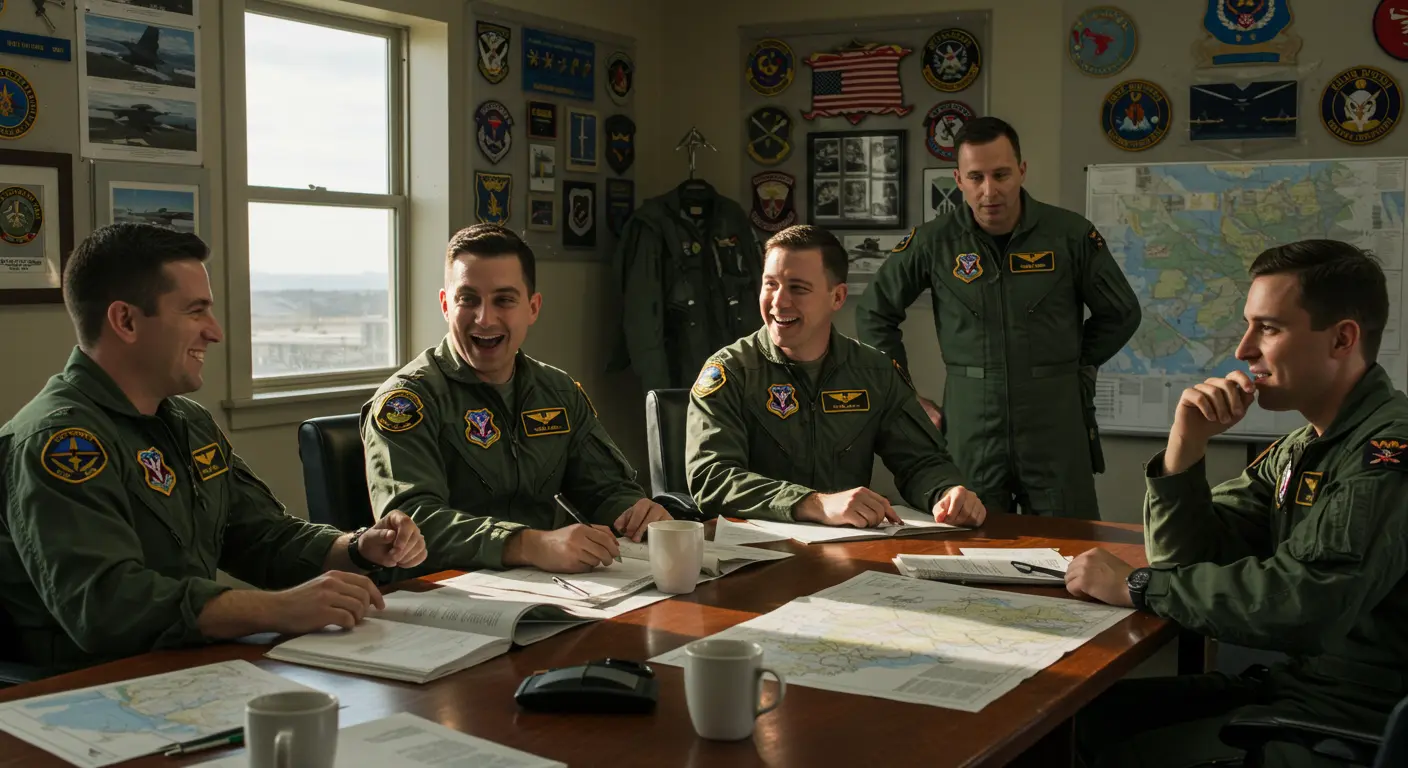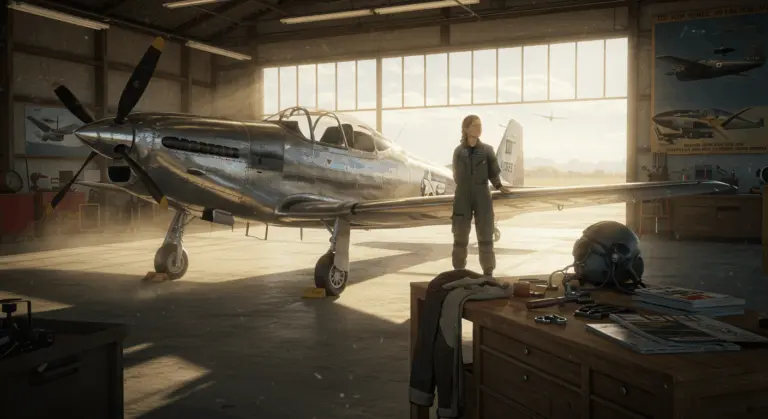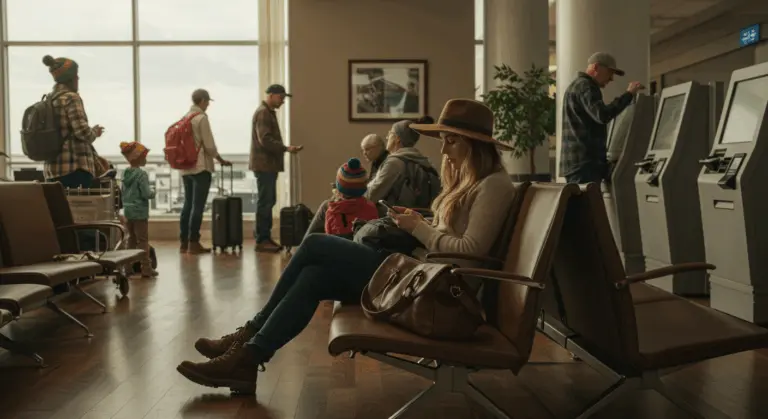Fighter Pilot Nicknames – Origins, Lists, and Assignments
Understanding Fighter Pilot Nicknames – What They Are
Fighter pilot nicknames, commonly known as call signs, go beyond simple alternative names—they’re coveted badges of honor and identity within the aviation community. These distinctive monikers replace a pilot’s given name during radio communications and squadron interactions, serving both practical and deeply cultural purposes.
Unlike self-chosen usernames or handles, call signs are typically bestowed upon pilots by their peers, often reflecting distinctive personality traits, memorable exploits, or physical characteristics. These names span the spectrum from flattering to deliberately humorous—sometimes even mildly derogatory. Yet each carries profound significance within the tight-knit fighter pilot brotherhood.
What makes these nicknames particularly special is their permanence. Once assigned—especially after being baptized in combat operations—call signs rarely change throughout a pilot’s career. They become woven into a pilot’s very identity, following them across squadrons and even into retirement.
Beyond preventing confusion during critical radio communications, call signs are vital to squadron culture. They:
-
Foster camaraderie and strengthen bonds.
-
Break down formal barriers between ranks.
-
Create a shared language that unifies pilots who face high-risk situations together.
How Fighter Pilots Get Their Call signs
The process of receiving a fighter pilot call sign is rich with tradition and rarely follows the path one might expect. Contrary to popular belief, pilots seldom earn their nicknames through heroic feats or extraordinary flying prowess. Instead, most call signs spring from moments of imperfection, embarrassment, or distinctive quirks that make for memorable stories.
One cardinal rule governs call sign assignment: pilots never choose their own. Their squadron mates take on this honor—or sometimes burden, typically during formal call sign review boards or informal gatherings. These sessions often turn into spirited roasts, where peers debate with gleeful precision on the perfect nickname that will shadow the pilot throughout their career.
Memorable mistakes provide rich material for call sign creation. A pilot who once taxied to the wrong runway might forever be known as “Lost Boy.” Another who spilled coffee on a general could earn the name “Splash.” Physical characteristics also inspire nicknames—a tall pilot might become “Stretch,” while one with prominent ears could be dubbed “Radar.”
The timing of call sign assignment varies across units and services. Some pilots receive their nicknames during training, while others earn them after joining their first operational squadron. Regardless of timing, these nicknames become rites of passage—signaling acceptance into the exclusive brotherhood and sisterhood of fighter pilots.
Once assigned, a call sign becomes official and is used across all contexts. From mission briefings and radio communications to squadron documentation and formal events—the nickname becomes inseparable from the pilot’s professional identity.
Categories of Fighter Pilot Nicknames
Fighter pilot call signs typically fall into several distinct categories, each reflecting different aspects of squadron culture and the circumstances of their creation. Understanding these categories reveals the values into the values and humor that define fighter pilot communities worldwide.
-
Incident-Based: The largest category by far, these call signs immortalize embarrassing moments or minor mishaps. A pilot might be dubbed “Crash” for damaging equipment or “Disco” for hitting the wrong switch at a critical moment.
-
Physical Attributes: These nicknames spotlight distinctive features—often with playful irony. A very tall pilot might be called “Tiny,” while a bald one could be “Chrome Dome.”
-
Name-Derived: Many call signs emerge as clever wordplay on a pilot’s real name. For instance, a pilot named Martin might become “Martini,” or someone named Fox could be called “Sly.”
-
Pop Culture References: Nicknames frequently draw from movies, music, or television. A pilot might be named after a celebrity they resemble or a fictional character whose traits they share. Films like Top Gun have heavily influenced public perception of call signs with names like “Maverick” and “Iceman.”
-
Performance-Based: Though less common, these call signs capture a pilot’s distinctive style rather than mere skill. An aggressive flyer might be called “Rage,” while a pilot who maintains perfect formation could be “Shadow.”
Each call sign category ensures every pilot’s nickname tells a unique story, contributing to the traditions that bind fighter pilot communities together across generations and national boundaries.
Funny Fighter Pilot Nicknames
Humor runs deep in fighter pilot culture, with funny call signs serving several important purposes:
Many humorous call signs preserve moments of embarrassment or questionable judgment for posterity. A pilot who once ejected from an aircraft unnecessarily might forever be known as “Parachute,” while another who became airsick during training could earn the nickname “Chunks.”
Self-deprecating humor earns respect in fighter squadrons. Pilots who embrace their embarrassing call signs gain respect from peers. Consider the pilot nicknamed “Bambi”—not for being graceful, but for becoming emotional during a particularly moving film shown during a long deployment. Rather than resisting the name, embracing it demonstrated the pilot’s ability to laugh at himself. This quality matters in squadron dynamics.
Ironic nicknames also thrive, playing on amusing contrasts between a pilot’s personality and their call sign. A methodical, by-the-book pilot might be dubbed “Maverick” (with deliberate irony), while an exceptionally tall aviator could be known as “Shorty.” One particularly memorable example? A pilot called “Ace”—who earned his name not for shooting down enemy aircraft but for accidentally damaging several friendly planes while taxiing on a crowded ramp.
These funny call signs serve as constant reminders that even in the serious business of military aviation, maintaining perspective and humor remains essential. They build bonds through shared laughter and ensure that even the most accomplished pilots remember their human fallibility.
Badass Fighter Pilot Names
While humorous call signs dominate real fighter squadrons, some nicknames project strength, skill, and intimidation—the badass call signs. These names carry a certain mystique, though they’re typically earned through distinctive flying styles or personality traits rather than being assigned for coolness factor alone.
-
Combat-Inspired: Names like “Hunter,” “Striker,” or “Viper” often reflect a pilot’s aggressive or predatory aerial tactics—marking their reputation among peers.
-
Historical References: Call signs such as “Viking” or “Spartan” connect pilots to ancient warrior traditions—suggesting either fierce aggression or disciplined precision.
-
Natural Phenomena: Nicknames like “Thunder,” “Cyclone,” or “Avalanche” evoke raw power and unpredictability—reflecting a pilot’s dynamic flying style or intense personality.
True badass call signs are earned, not assigned arbitrarily. They develop naturally within squadrons, reflecting genuine respect for a pilot’s distinctive qualities—combat effectiveness, leadership under pressure, or reliability when the stakes are highest.
Famous Fighter Pilots and Their Nicknames
Throughout aviation history, certain fighter pilots have achieved legendary status, with their call signs becoming inseparable from their accomplishments. These famous aviators and their nicknames provide glimpses into different eras of aerial combat and the evolving culture of fighter aviation.
From World War II, Gregory “Pappy” Bonington stands as one of the most renowned examples. Despite being only 31, Bonington earned his nickname because he was significantly older than the pilots under his command in the famous Black Sheep Squadron. His call sign reflected both respect and good-natured ribbing about his age. He became one of America’s top aces with 28 confirmed victories.
Robin Olds, who flew in both World War II and Vietnam, carried the call sign “Wolfman” during his later career. The nickname referenced the distinctive handlebar mustache he grew in deliberate violation of Air Force regulations—a form of silent protest. This call sign captured both his maverick attitude and his fearsome reputation as a tactical innovator and aggressive combat leader.
Not all famous pilots had widely known call signs. Chuck Yeager, perhaps the most famous test pilot in history for breaking the sound barrier, didn’t have a call sign that entered popular culture. Instead, he was known simply by his last name during radio communications. Sometimes a pilot’s achievements transcend the need for a nickname.
In modern times, call signs have sometimes become part of a pilot’s public identity. Colonel Martha “Matrix” McNally, the first American woman to fly in combat, carried a call sign that reflected both her determination and her groundbreaking role in military aviation history.
These famous call signs demonstrate how nicknames can transcend their origins to become part of aviation lore. They capture essential qualities of remarkable pilots and preserve their legacies for future generations of aviators.
Creating Your Own Fighter Pilot Nickname
While authentic fighter pilot call signs are bestowed rather than chosen, there are many contexts where creating your own fighter pilot nickname might be appropriate. Whether you’re writing fiction, choosing a gaming handle, or exploring this tradition, several approaches can help you craft a compelling call sign.
-
Use a Call sign Generator: Online tools can provide a starting point by combining common elements—generating fresh ideas.
-
Draw from Personal Characteristics: Identify distinctive physical traits, personality quirks, or intriguing background details. A fast runner could be “Bolt,” while an analytical thinker might be “Calculator.”
-
Reference Memorable Incidents: Mine embarrassing moments or unusual achievements for inspiration. A story-worthy event makes for a better nickname, like “Flamingo” for someone who once fell spectacularly.
-
Incorporate Cultural References: Draw from mythology, literature, or film to add layers of meaning. A strategic person could be “Odysseus,” while a precise one might be “Metronome.”
When creating a call sign for fictional purposes, consider how it reflects character development. A nickname can reveal how others perceive a character, hint at their backstory, or create ironic contrast with their actual personality. The most compelling fictional call signs feel earned rather than arbitrarily assigned.
For the most authentic-sounding call sign, focus on imperfection. The best nicknames often commemorate mistakes or quirks. This reflects the real-world value placed on humility over manufactured coolness.
The Legacy of Fighter Pilot Nicknames
Fighter pilot call signs represent more than just colorful nicknames—they form a living tradition that connects generations of aviators across decades of aerial combat evolution. This legacy continues to shape military aviation culture while extending its influence into broader society.
Within military circles, call signs serve as repositories of squadron memory. When pilots gather, stories behind famous call signs are retold, preserving squadron history and passing down lessons learned through experience rather than formal instruction. A nickname like “Doomsday”—assigned in the 1970s to a pilot who accidentally triggered a false alert—might still prompt discussions about emergency procedures fifty years later.
Call signs also create continuity across generations of fighter pilots. When a young aviator receives their nickname through the same ritual experienced by their predecessors, they join a lineage stretching back to the early days of military flight. This connection transcends technological changes. It links pilots who flew propeller-driven aircraft with those operating the most advanced fifth-generation fighters.
Documentation of call signs in squadron records, mission reports, and official histories ensures their preservation. Many air forces maintain databases of pilot call signs—both for practical communication purposes and to maintain this aspect of their heritage. Aviation museums often include call signs in their exhibits, recognizing their cultural significance alongside technical achievements.
Most importantly, call signs humanize the often technical and procedure-driven world of military aviation. Behind every fighter aircraft and beneath every helmet is an individual with a nickname that reveals something essential about their character, experiences, or place within their community. This human element reminds us that even in an era of increasingly sophisticated technology, the personality and spirit of the pilot remain central to the fighter aviation tradition.
As long as fighter pilots take to the skies, the tradition of call signs will continue to evolve while maintaining its core purpose. They forge bonds between aviators who share the rare experience of pushing the boundaries of human performance in the most demanding aerial environments.





